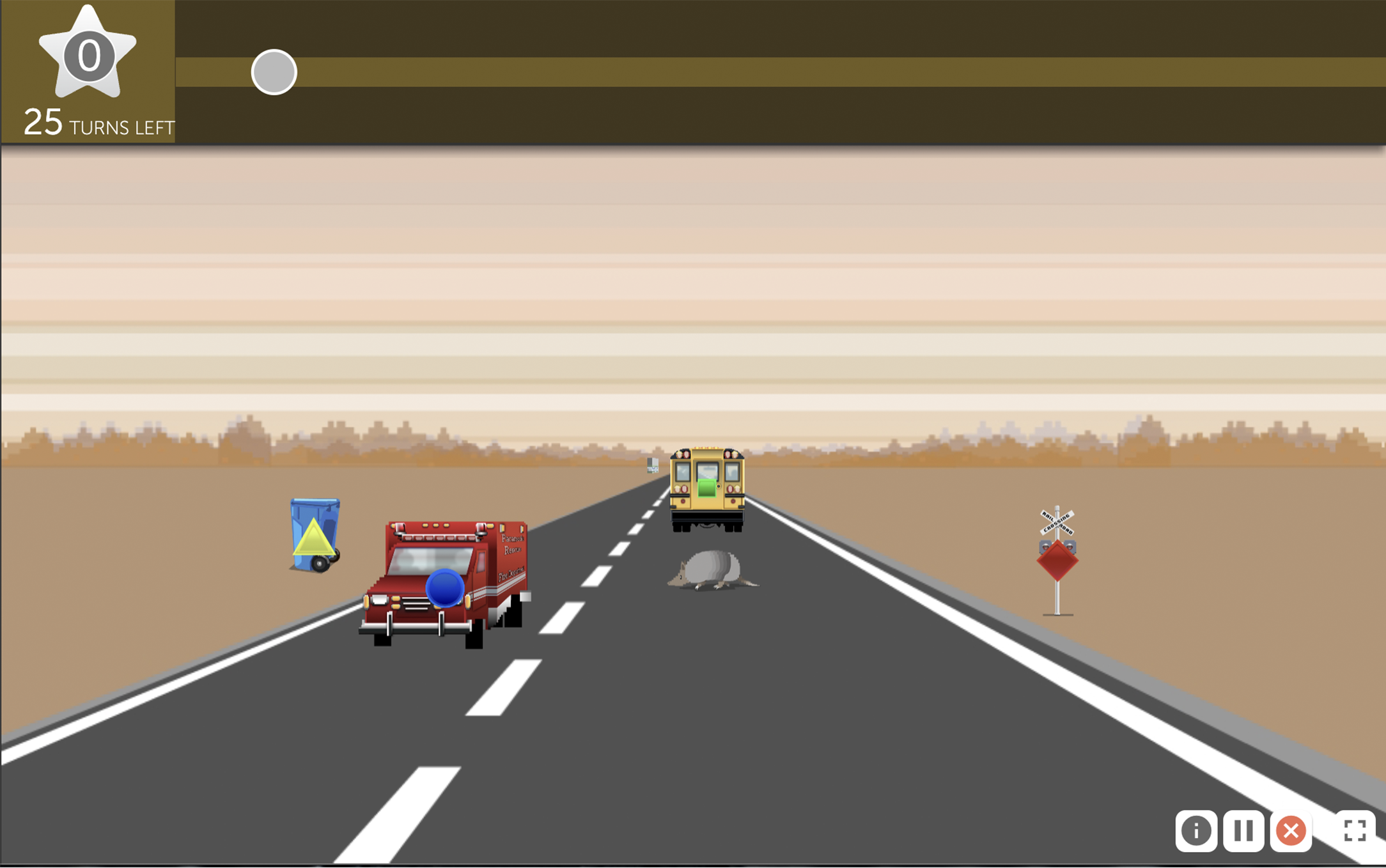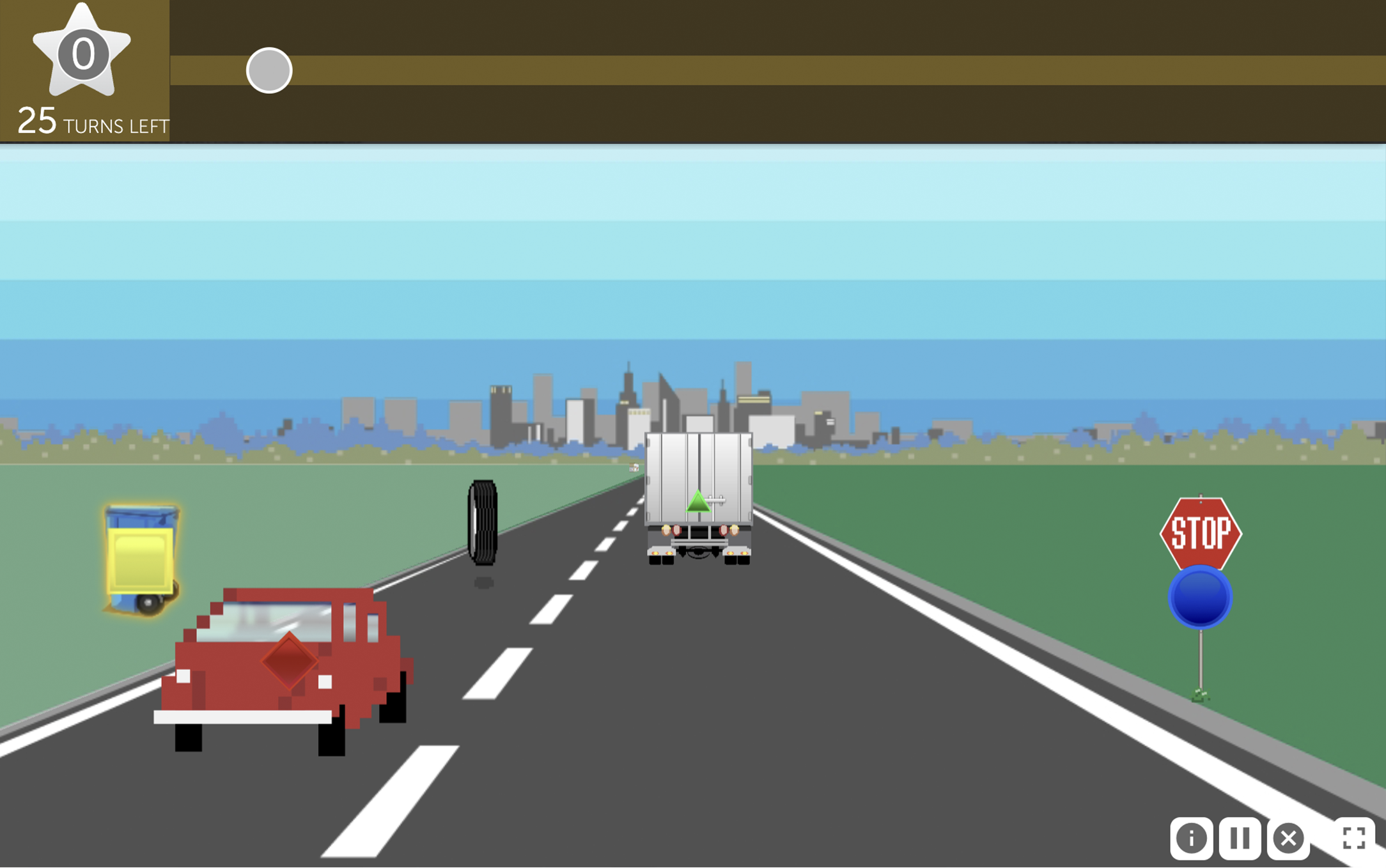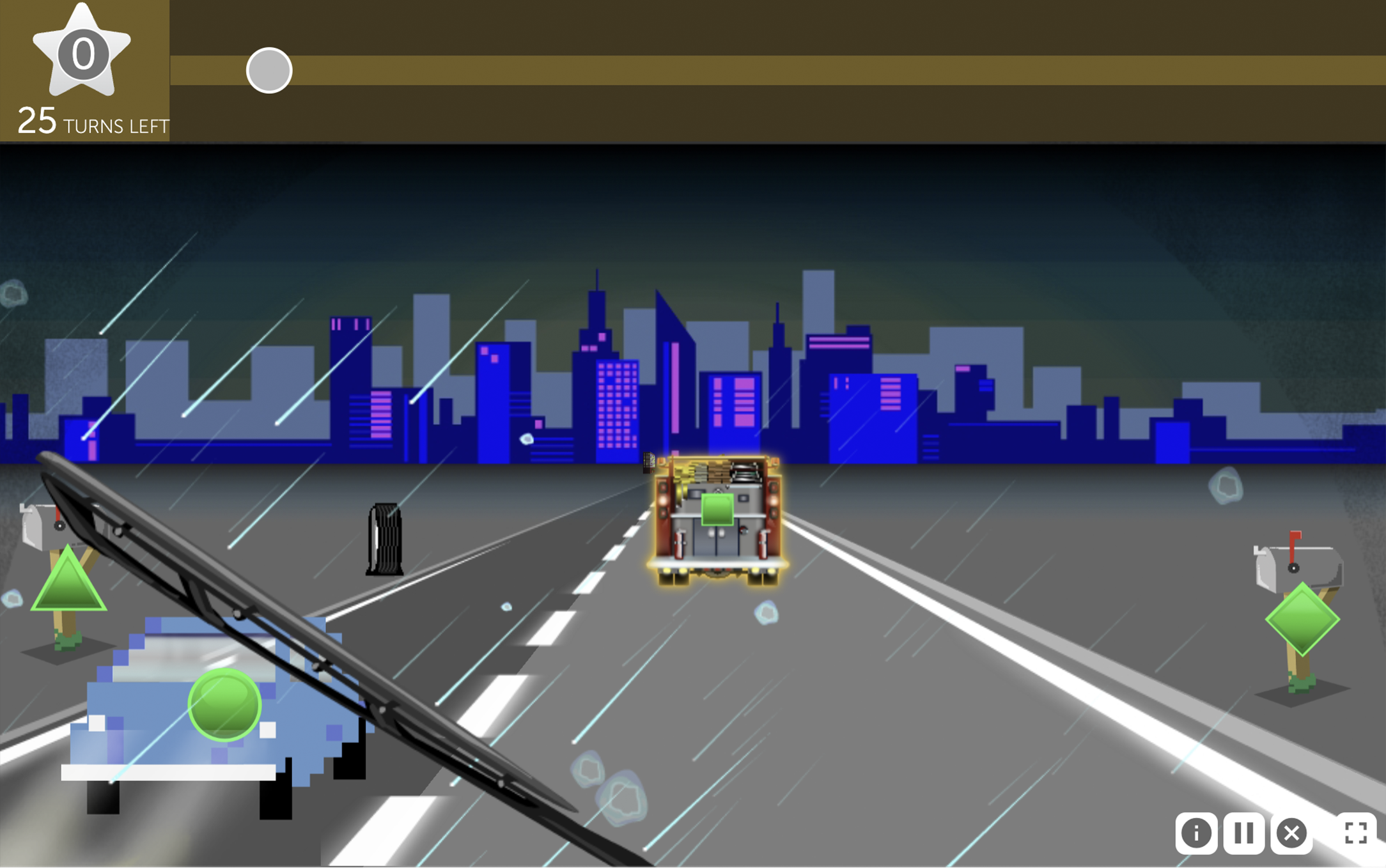 Imagine you’re driving along, when suddenly, an obstacle appears out of nowhere. What do you do? Did you notice it in time? And can you react quickly enough to avoid it safely?
Imagine you’re driving along, when suddenly, an obstacle appears out of nowhere. What do you do? Did you notice it in time? And can you react quickly enough to avoid it safely?
The ability to drive, run, cycle, or walk safely through the world depends largely on your ability to notice potential hazards in your peripheral vision while simultaneously paying attention to the road in front of you.
Optic Flow requires you to make rapid visual discriminations in the center of your gaze while staying alert to potential hazards in the periphery. The task takes place in different navigation conditions including simulations of rain, fog, and night.
In Optic Flow, you’ll see a target shape on a sign. Vehicles and various roadside objects will approach at different speeds, and your task is to select the one with the shape that matches the target. As you identify the correct shape, the action will move faster and faster.
As you move through the exercise, it gets harder in these ways:
- The shapes on the vehicles become more similar.
- The driving conditions change, making it more difficult to find the target shape and avoid hazards. As on the actual road, speed must be reduced to perform accurately as the conditions change (time of day, and weather).
- The number and type of hazards change.
- The backgrounds become more complex and distracting as you move from the desert to the suburbs, and finally to the bustling city.
- The exercise adapts to your performance by reducing the time you have to find the target shape.



